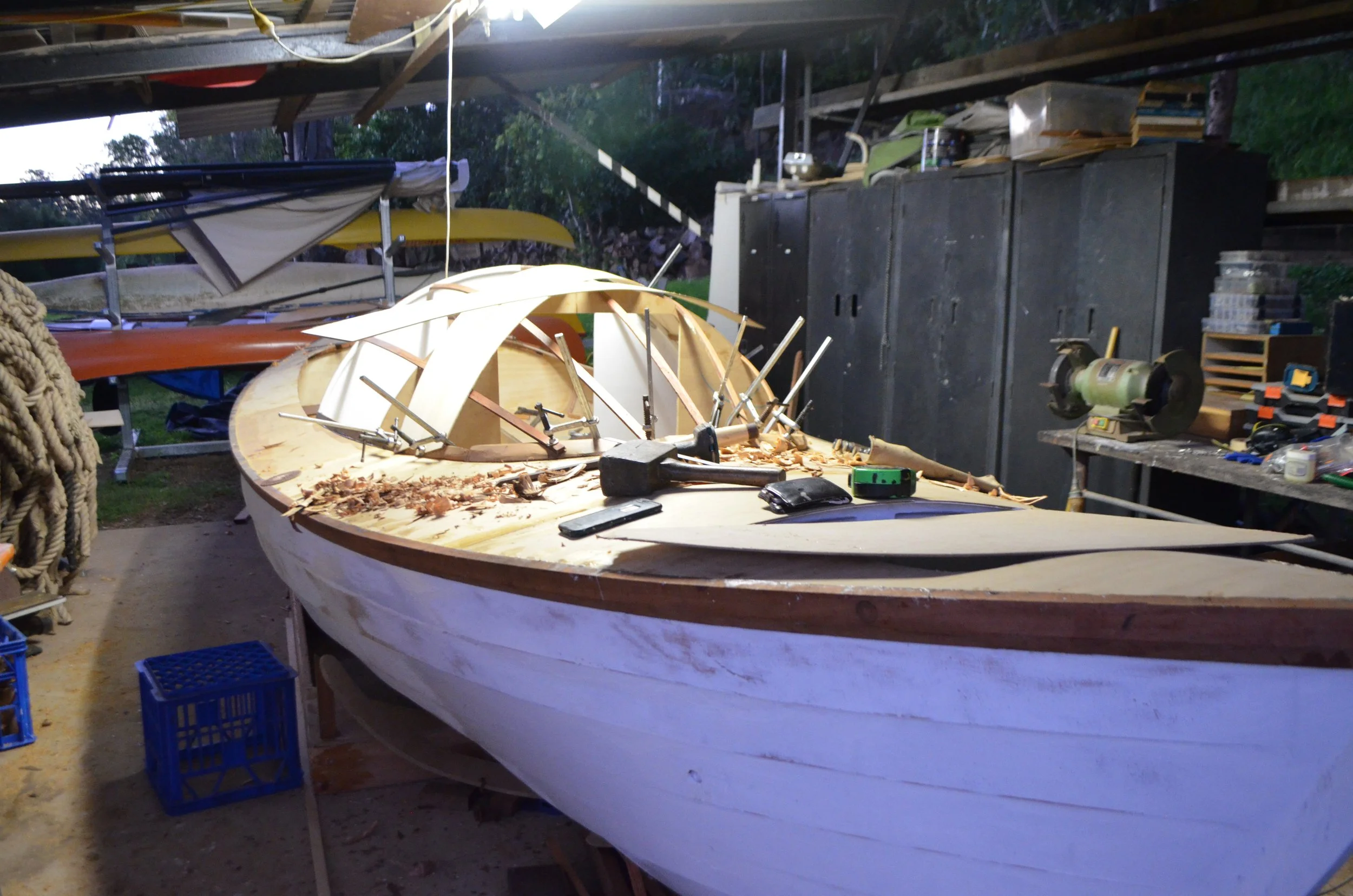Maiwar, (pronounced may-wah), is the local indigenous name for the Brisbane River, her birthplace. She is derived from 19th century whaleboats, especially those originating from the Beetle family. Her shape forward of the midsection is typical whaleboat, however, her after sections are fuller than normal. This was a design feature necessary to ensure that she would trim properly when fully laden; most of her stores being aft of midship. On deck she is relatively a conventional ocean rowing boat. She has a central, self-draining cockpit, with a small footwell. Forward is a spartan cabin with enough room for a full sized bunk with a miniature galley and navigation station. Aft of the cockpit lies a single large storage compartment. She has a stern hung rudder aft and a high aspect daggerboard up forward, positioned on the starboard side of the keel. Her cabin or ‘bubble’ is as small as practical, meaning there is less windage, and more effort required by the oarsman in tradewind conditions.
Maiwar was built over a period of 5 months. Tom worked solo for 10 hours a day, 5 to 6 days a week. After her launch work continued intermittently for some months; trialling and improving where necessary. She is built with a combination of traditional and modern materials and techniques, using the ‘clinker’ method of construction, with epoxy glue and copper nails used to fasten the planks. Her backbone of recycled Douglas Fir, her planking is 6.5mm Hoop Pine plywood fastened to Spotted Gum ribs, her decks and cabin are also of plywood. Western Red Cedar is used throughout for framing and Australian Cedar is used for brightwork/trim. All the timber used in her construction is either recycled or plantation grown. The only fibreglass used in her construction is in the sheathing of the footwell and seat rails, otherwise, all surfaces are coated with epoxy resin and a two-pack paint system.
Maiwar
'Dandiiri Maiwar', roughly translates as "meet at the river". It combines two words commonly used by local Aboriginal groups: 'dandiiri' meaning "to meet" and 'maiwar', the traditional word used to refer to the waterway now known as the Brisbane River.
Maiwar features 9 separate watertight compartments. Her wooden construction, as well as added foam flotation, make her unsinkable. Although traditional in nature, she is fitted with AGM batteries and solar panels, as well as handheld GPS, electric lighting, EPIRBs, tracker, satellite phone and an AIS transponder. Maiwar does not have a fixed screen or display on board. Her navigation tools are a sextant and paper charts.
She carries three pairs of oars, two pairs are carbon fibre with timber handles, and the other pair are spruce, they are all identical in specifications except for weight. Water storage on board consists of 300 one litre water bottles. She has a gimballed gas stove for cooking.
Click Below to Read the Blog about Maiwar’s Construction.
Tom’s Tools












